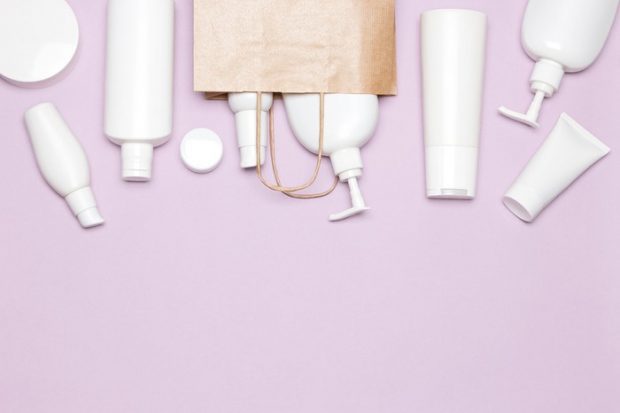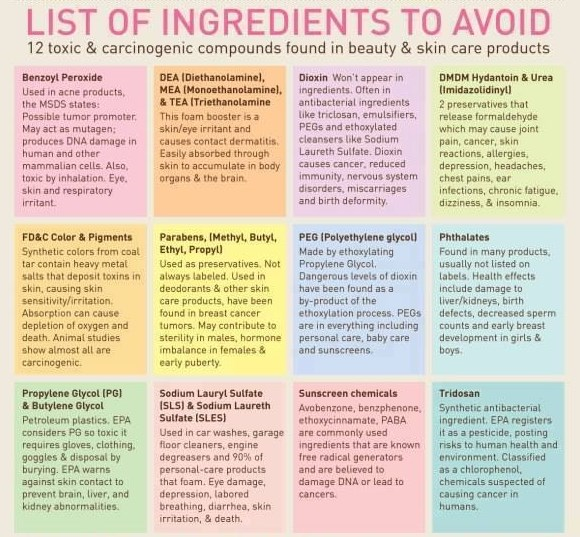Skincare products are a gift for our bodies. We all have a skin condition or we want to keep our skin healthy with all the pollution that surrounds us. No matter the reason, we all love to take care of our beautiful skin and to maintain it young for as long as possible.
But in the beauty world, we learned by now that nor all skincare products are good for any skin type, or skin in general because of their ingredients. So, how can you tell what’s good and what’s bad for your skin?
Precisely! From the ingredient list. But the ingredient list might be confusing for most of us. Of course, unless you are a chemist or you’re in the med school, and you are familiar with and the unpronounceable words.
But, for the ones who don’t know much about the ingredient lists and their meaning, today we’re presenting our top guide about how to read an ingredient list of skincare products.

1 Understanding the Ingredients
At first sight, the ingredient list might look very strange and impossible to understand. But, if you take a close look, you’d notice that there are Latin names and others that sound “chemical-like”.
Some people believe that if you can’t pronounce the ingredient’s nave, it must be bad for you. Well, being able to read a word is not a matter of good and bad, OK?! Therefore, here’s a list of good ingredients for your skin: xanthan gum, tocopherol, acetyl alcohol, citric acid, potassium sorbate, and Sorbian olivate.
2 Ingredients Order
Ordering the ingredients is very easy. They all go in a decreasing order form the ingredient/s with the most amount to the ones with the less amount. Most producers are even adding the percentage of the main ingredients to gain your trust even more.
But when it comes to ingredients with less than 1%, there is no specific order.
3 Allergens
If you ever read an ingredient list, you might’ve got confused that after the ingredients are listed, there’s another list with wired names that follow. Now, what is that list all about?
Obviously, it’s about the allergens from the product. So, if someone knows that is allergic to something, they should know not to buy it.
4 Abbreviations
I believe that the shadiest thing on any ingredient list is the abbreviations. While the ingredients are abbreviated for a reason – because the ingredient’s name is too long or complicated – they still get the customers confused.
But do not worry – they only seem suspicious. In most cases, the abbreviated ingredients stand for plant-based ingredients like “Anthemis Nobillis Flower Extract.” Therefore, if you see abbreviations in the ingredient list, you can take it as a good sign.
5 Where to Look For Ingredients?
Naturally, you might want to be 100% sure that what you’re about to buy to take care of your skin is good and natural. For that reason, you might like to know a trustworthy source where you can look up for ingredients. Here are several great resources for you: Skin Deep, Cosmetics Info, Paula’s Choice, and A Consumer’s Dictionary of Cosmetic Ingredients.
6 Understanding Symbols
While symbols might not be precisely ingredients, most of the time, they say something about them. Let’s take the bunny on the product – you’ll know that it’s cruelty-free. As well, several symbols will tell you if the product is using organic ingredients or not.

Conclusion
It is extremely important to understand your skincare ingredient list. Your skin will thank you for your effort. Even though some of us may think that skincare products can’t be harmful to us because otherwise, they won’t be on the market, there are some which might cause some damage.
That’s why you should always be informed and know how to read the ingredient list of your skincare products. If you care about your skin, you should mind what you are buying, so your skin will look younger for as long as possible.
Author’s bio:
 Jane Evans is a highly skilled content writer and blogger from York, where she offers her professional writer service. Jane enjoys traveling around the globe to meet new cultures and interesting people, and she loves to discuss modern art, literature, computer games, and new technologies. You can find Jane on LinkedIn and Twitter.
Jane Evans is a highly skilled content writer and blogger from York, where she offers her professional writer service. Jane enjoys traveling around the globe to meet new cultures and interesting people, and she loves to discuss modern art, literature, computer games, and new technologies. You can find Jane on LinkedIn and Twitter.
Read More:
Sustainable looks: how to develop eco-friendly beauty regimen this year
Tips on switching to organic foundation
Salt-free shampoo: reasons to make a switch to it

